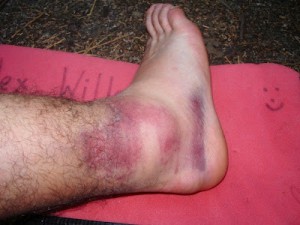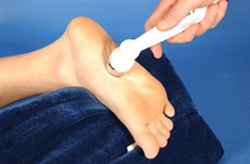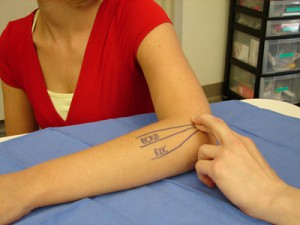Back to Blog
Back to Basics, Repair at the Cellular Level: Phases of Healing
ssential to guiding any client’s rehabilitation is a strong knowledge about the phases of healing. This is a very complicated process that we will separate into three stages:
- Inflammatory Phase
- Proliferation Phase
- Remodeling Phase
Inflammatory Phase
- Begins upon tissue damage (mircodamage) – lasts 0-96 hours
- Blood vessels and cells are damaged, chemicals are released. Ultimate result is pain and swelling.
- This phase is portrayed by:
- Pain
- Produced by chemical reactions on the damaged nerve endings, and by the increased local pressure.
- Swelling
- Chemicals are released locally that make blood vessels lose more fluid (not necessarily blood) into the damaged area. With this fluid, lymphocytes (our immune response) are carried.
- Heat/Redness
- Damaged cells release chemicals that open up local blood vessels. Blood flows more freely to these areas and it becomes warm and pink. There may also be bruising.
- Pain

- Goals for therapy:
- The body’s reaction to damage is primitive. The inflammation phase is usually dragged out too long, and so we try to diminish some of its effects. We want to reduce bleeding, swelling and pain.
- PRICE principles are in effect: Protection of the damaged area from further damage. Rest the area (if you have blown out your ankle, don’t keep walking on it). Ice will be our go-to for the next week or so. Compression may be appropriate, but must not be overly restricting – speak with your physiotherapist about this! Elevation – try to keep the injured area above the heart. This will help reduce swelling (works especially well with ankles/feet).
- Other interventions will be maintaining your pain free range of motion, and possible use of anti-inflammatory medication/rubs.
- Also available for treatment in this early phase is ultrasound (swelling), some electrophysical agents (pain), and acupuncture (pain and swelling).
Proliferation Phase
- Lasts roughly from day 4 – day 15
- The all very important scar formation. Fibroblasts (scar cells) were brought in through the inflammatory phase and begin laying down scaffolding for other healing cells to move on.
- Fibroblasts mature into myofibroblasts that then close the edges of the wound – scar contraction.
- Important to note is that the scar is laid down in a very mish-mash way. The scar is weak and not normal tissue!
- Swelling still persists, but it is less than during the previous phase.
- One of the main signs during this phase is loss of motion – the scar contraction affect your available range of movement severely!
- Goals for therapy:
- We have to make sure that we are gently loading the scar through range of motion exercises. The integrity of the scar is such that makes it weaker than regular tissue. Our goal is to stretch and load the scar, but not so much that we damage the site again and restart the inflammatory phase.
- Loading of the scar helps us develop the orientation of the fibers of the scar – as the fibers align, the scar becomes stronger, and closer to normal tissue.
- Ultrasound (in-vitro) has been shown to increase collagen production (scaffolding) and thus increasing the scar strength.

Remodeling Phase
- From day 15 to month 6 (and upwards of several years)
- The scar was full of blood vessels in the previous phase – it now has very few.
- The scar is fully laid down, but is still weak.
- Goals for therapy:
- Achieving full range of motion through passive ROM, mobilization or manipulation of soft tissue.
- Strengthening exercises (especially eccentric loading)
- Sometimes, scar transverse friction massages will help with final orientation of the scar.


